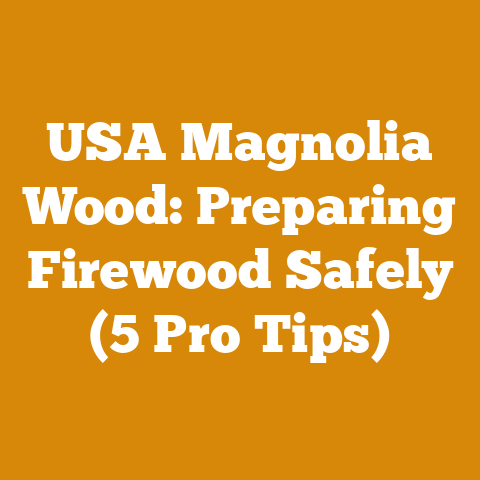Timber Frame Swing Set Build (7 Expert Woodworking Tips)
Ever looked at a playground swing set and thought, “I could build that… but better?” I have. And that’s exactly what this guide is about: crafting a timber frame swing set that’s not only sturdy and safe but also a beautiful addition to your backyard. We’re diving deep into expert woodworking techniques, moving beyond basic DIY and into the realm of heirloom-quality craftsmanship.
The State of Play: Why Timber Framing Matters Now
Globally, the demand for outdoor living spaces is booming. Recent reports indicate a 15-20% increase in DIY outdoor projects annually, with a significant portion focused on creating family-friendly environments. What’s driving this? A desire for sustainable, personalized spaces, and a growing awareness of the environmental impact of mass-produced goods. Timber framing, with its emphasis on natural materials and enduring construction, perfectly aligns with these trends.
Why Choose Timber Framing for a Swing Set?
Timber framing offers several key advantages over conventional construction:
- Strength and Durability: Timber frames are inherently strong and can withstand significant loads, making them ideal for a swing set that will endure years of use.
- Aesthetics: The exposed timber frame creates a visually stunning structure, adding character and charm to your outdoor space.
- Sustainability: Using locally sourced timber reduces the environmental footprint of your project and supports local economies.
- Longevity: Properly constructed and maintained timber frames can last for generations.
My Journey into Timber Framing
My own journey into timber framing began with a simple desire: to build a woodshed that would last longer than the pre-fab kits available at big box stores. I quickly discovered that timber framing wasn’t just about building; it was about connecting with a tradition of craftsmanship that spans centuries. The satisfaction of shaping a piece of wood with hand tools, knowing that it will become part of a lasting structure, is truly unparalleled. I’ve since built everything from garden sheds to small cabins, each project teaching me valuable lessons about wood, joinery, and the importance of patience.
1. Planning Your Timber Frame Swing Set: Laying the Groundwork for Success
Before you even pick up a tool, careful planning is essential. This phase will determine the size, design, and materials for your swing set.
1.1. Design Considerations: Size, Layout, and Swing Options
- Size: Consider the available space in your backyard and the number of children who will be using the swing set. A typical swing set might measure 10-12 feet wide, 8-10 feet deep, and 8-10 feet tall. However, you can customize these dimensions to fit your specific needs.
- Layout: Think about the arrangement of swings, slides, and other features. Ensure adequate spacing between swings to prevent collisions. Also, consider the surrounding landscape and potential obstacles.
- Swing Options: Decide on the types of swings you want to include. Options include:
- Belt swings: The standard swing design, suitable for children of all ages.
- Tire swings: A classic option that provides a fun and challenging swinging experience.
- Trapeze bars: A great way to build upper body strength and coordination.
- Glider swings: Designed for two children to swing together.
- Safety: Always prioritize safety. Ensure adequate clearance around the swing set and use impact-absorbing surfacing materials such as wood chips, rubber mulch, or sand.
1.2. Material Selection: Choosing the Right Wood for the Job
The choice of wood is crucial for the strength, durability, and appearance of your swing set.
- Wood Species:
- Cedar: Naturally rot-resistant and insect-resistant, making it an excellent choice for outdoor structures. Cedar is relatively soft and easy to work with but can be more expensive than other options.
- Data Point: Western Red Cedar has a decay resistance rating of “durable” according to the USDA Forest Products Laboratory.
- ** Redwood:** Similar to cedar in terms of rot resistance and workability. Redwood is also aesthetically pleasing, with a rich reddish-brown color.
- Pressure-Treated Lumber: An affordable and readily available option. Pressure-treated lumber is chemically treated to resist rot and insect damage. However, it’s important to use lumber that is specifically treated for outdoor use and to follow all safety precautions when working with it.
- Caution: Always wear gloves and a dust mask when cutting or sanding pressure-treated lumber. Dispose of scraps properly.
- Douglas Fir: A strong and relatively affordable option. Douglas fir is not as rot-resistant as cedar or redwood, so it’s important to apply a protective finish.
- Tip: Look for Douglas Fir with a high density for increased strength and durability.
- Oak: A hardwood known for its strength and durability. Oak is more difficult to work with than softer woods but can provide a beautiful and long-lasting swing set.
- Insight: White oak is more rot-resistant than red oak, making it a better choice for outdoor applications.
- Cedar: Naturally rot-resistant and insect-resistant, making it an excellent choice for outdoor structures. Cedar is relatively soft and easy to work with but can be more expensive than other options.
- Timber Size: The size of the timbers will depend on the size and design of your swing set. As a general guideline, use 6×6 or 8×8 posts for the main frame and 4×6 or 6×6 beams for the top support. Consult with a structural engineer or experienced timber framer for specific recommendations.
- Moisture Content: Ensure that the wood is properly seasoned before using it in your project. Green wood (freshly cut wood) will shrink and warp as it dries, which can weaken the structure. Aim for a moisture content of 12-15% for outdoor projects.
1.3. Tool Inventory: Equipping Your Workshop
Timber framing requires a specialized set of tools. Here’s a list of essential items:
- Measuring Tools:
- Tape measure (25 feet or longer)
- Combination square
- Speed square
- Level (4 feet or longer)
- Plumb bob
- Cutting Tools:
- Circular saw (7 1/4 inch or larger)
- Chainsaw (for rough cutting and felling trees, if applicable)
- Chainsaw vs. Axe: While an axe can be used for felling smaller trees, a chainsaw is far more efficient and safer for larger timber. Choose a chainsaw with a bar length appropriate for the size of the trees you’ll be felling.
- Hand saw (for fine cuts and detail work)
- Japanese pull saw (for precise cuts)
- Drilling and Fastening Tools:
- Drill/driver
- Impact driver
- Auger bits (for drilling large holes)
- Timber framing screws or bolts
- Shaping and Joinery Tools:
- Mortise chisel
- Mallet
- Drawknife
- Spokeshave
- Safety Gear:
- Safety glasses
- Hearing protection
- Gloves
- Dust mask
- Steel-toed boots
1.4. Budgeting and Resource Management
Timber framing can be a relatively expensive project, so it’s important to create a realistic budget and manage your resources effectively.
- Material Costs: Price out the cost of lumber, hardware, and finishing materials. Consider sourcing lumber directly from a local sawmill to save money.
- Tool Costs: Factor in the cost of any tools you need to purchase or rent.
- Labor Costs: If you plan to hire help, include labor costs in your budget.
- Contingency Fund: Set aside a contingency fund to cover unexpected expenses.
- Resource Management: Plan your cuts carefully to minimize waste. Use scrap wood for smaller components or other projects.
2. Cutting and Preparing the Timber: From Log to Frame
Once you have your plan in place and your tools ready, it’s time to start cutting and preparing the timber.
2.1. Milling the Timber: Sizing and Shaping
If you’re starting with logs, you’ll need to mill them into the desired dimensions. This can be done with a portable sawmill or by hiring a local sawmill to do the work for you.
- Portable Sawmill: A portable sawmill allows you to mill logs on-site, which can save you time and money. However, it requires some skill and experience to operate safely and effectively.
- Hiring a Sawmill: Hiring a local sawmill is a convenient option if you don’t have the equipment or experience to mill the timber yourself. Be sure to specify the dimensions you need and discuss the cost beforehand.
2.2. Layout and Marking: Precision is Key
Accurate layout and marking are essential for creating tight-fitting joints.
- Reference Faces: Choose two adjacent faces on each timber to use as reference faces. These faces should be straight and square.
- Marking Lines: Use a combination square and a sharp pencil to mark the locations of mortises, tenons, and other joinery features.
- Checking for Square: Regularly check your layout to ensure that everything is square and true.
2.3. Cutting the Timbers: Accuracy and Efficiency
Use a circular saw or chainsaw to cut the timbers to the desired length. Be sure to cut accurately and squarely.
- Circular Saw: A circular saw is ideal for cutting timbers to length and for making angled cuts. Use a sharp blade and a guide to ensure accurate cuts.
- Chainsaw: A chainsaw can be used for rough cutting and for felling trees, if applicable. However, it’s important to use a chainsaw safely and to wear appropriate safety gear.
2.4. De-barking Procedures
If you are using timber directly from freshly felled trees, removing the bark is crucial. Bark harbors insects and moisture, which can accelerate decay.
- Timing: The best time to de-bark is in the spring or early summer when the sap is flowing. The bark will be easier to remove at this time.
- Tools: Use a drawknife or a barking spud to remove the bark. A drawknife is a two-handled tool with a blade that is pulled towards you. A barking spud is a long-handled tool with a curved blade that is used to pry the bark off the log.
- Technique: Start at one end of the log and work your way to the other end. Use a steady, even pressure to remove the bark. Be careful not to damage the underlying wood.
3. Crafting the Joinery: The Heart of Timber Framing
The strength and beauty of a timber frame lie in its joinery. This section will cover the most common timber framing joints and how to create them.
3.1. Mortise and Tenon Joints: The Cornerstone of Timber Framing
The mortise and tenon joint is the most fundamental joint in timber framing. A mortise is a rectangular hole cut into one timber, and a tenon is a protruding tongue cut on the end of another timber that fits snugly into the mortise.
- Mortise Layout: Accurately mark the location and dimensions of the mortise on the timber.
- Mortise Cutting: Use a mortise chisel and mallet to carefully remove the wood from the mortise. Start by chopping out the center of the mortise and then work your way to the edges.
- Tip: Use a mortising machine for faster and more accurate mortise cutting.
- Tenon Layout: Accurately mark the location and dimensions of the tenon on the timber.
- Tenon Cutting: Use a hand saw or a tenoning jig on a table saw to cut the tenon.
- Test Fit: Test fit the tenon into the mortise. The joint should be snug but not too tight.
- Pegging: Drill a hole through the mortise and tenon and insert a wooden peg to lock the joint in place.
3.2. Dovetail Joints: Adding Strength and Visual Appeal
Dovetail joints are another common timber framing joint. A dovetail joint consists of a series of interlocking “tails” and “pins” that create a strong and visually appealing connection.
- Layout: Accurately mark the location and dimensions of the dovetails on the timbers.
- Cutting: Use a hand saw or a dovetail jig on a table saw to cut the dovetails.
- Assembly: Test fit the dovetails and adjust as necessary. The joint should be tight and secure.
3.3. Bridle Joints: A Simple and Effective Connection
A bridle joint is a simple and effective way to connect two timbers at a right angle. A bridle joint consists of a slot cut into one timber that receives the end of another timber.
- Layout: Accurately mark the location and dimensions of the bridle joint on the timbers.
- Cutting: Use a hand saw or a router to cut the bridle joint.
- Assembly: Test fit the joint and adjust as necessary. The joint should be tight and secure.
3.4. Wood Selection for Pegs
The pegs that secure the mortise and tenon joints are crucial. I always prefer using a hardwood for these, like oak or maple. They’re strong and less likely to shear under stress. I’ve seen too many projects fail because someone skimped on the pegs and used a softwood that couldn’t handle the load.
4. Assembling the Frame: Raising Your Swing Set
With the joinery complete, it’s time to assemble the timber frame.
4.1. Pre-Assembly: Dry Fitting and Adjustments
Before permanently assembling the frame, it’s essential to do a dry fit. This involves assembling all the pieces without glue or fasteners to ensure that everything fits together properly.
- Check for Square: Use a level and a square to ensure that the frame is square and plumb.
- Make Adjustments: If any adjustments are necessary, make them before proceeding to the next step.
4.2. Raising the Frame: Safety First
Raising a timber frame requires careful planning and execution. It’s important to have enough people to safely lift and maneuver the heavy timbers.
- Safety Briefing: Conduct a safety briefing before starting the raising process. Ensure that everyone understands their role and the potential hazards.
- Lifting Equipment: Use appropriate lifting equipment, such as ropes, pulleys, and levers, to raise the timbers.
- Teamwork: Work as a team and communicate clearly.
- Temporary Bracing: Use temporary bracing to support the frame as it’s being raised.
4.3. Fastening the Joints: Securing the Structure
Once the frame is raised and plumb, it’s time to permanently fasten the joints.
- Timber Framing Screws or Bolts: Use timber framing screws or bolts to secure the joints. These fasteners are specifically designed for timber framing and provide a strong and reliable connection.
- Wooden Pegs: Drive wooden pegs into the pre-drilled holes to lock the mortise and tenon joints in place.
4.4. Case Study: The Importance of Level Ground
I once helped a friend raise a timber frame barn on a slightly sloped piece of land. We thought we could compensate for the slope during the framing process. Big mistake! The entire structure was slightly off-kilter, and we spent days trying to correct it. The lesson learned: always, always start with level ground. It saves a world of headaches later.
5. Adding the Swings and Hardware: Final Touches
With the timber frame assembled, it’s time to add the swings and hardware.
5.1. Swing Hangers: Choosing the Right Hardware
Select swing hangers that are specifically designed for outdoor use and that are rated for the weight of the swings.
- Types of Swing Hangers:
- Eye Bolts: Simple and affordable option.
- Swivel Hangers: Allow the swings to rotate freely.
- Heavy-Duty Hangers: Designed for high-use applications.
5.2. Installing the Swings: Safety and Security
Install the swings according to the manufacturer’s instructions. Ensure that the swings are securely attached to the swing hangers.
- Chain or Rope: Use chain or rope that is specifically designed for swings.
- Adjusting the Height: Adjust the height of the swings to accommodate children of different ages.
5.3. Adding Safety Features: Ensuring a Safe Play Environment
Safety is paramount when building a swing set.
- Impact-Absorbing Surfacing: Install impact-absorbing surfacing materials, such as wood chips, rubber mulch, or sand, under and around the swing set.
- Clearance: Ensure adequate clearance around the swing set to prevent collisions.
- Regular Inspections: Regularly inspect the swing set for any signs of wear or damage.
5.4. Personal Story: The “Swing Test”
After completing my first swing set, I couldn’t resist being the first one to try it out. I gave it the “swing test,” swinging as high as I could. It held, and the feeling of accomplishment was incredible. It’s a reminder that these projects are about more than just construction; they’re about creating joy and memories.
6. Finishing and Protecting the Timber: Preserving Your Investment
To protect your timber frame swing set from the elements and ensure its longevity, it’s important to apply a protective finish.
6.1. Choosing a Finish: Options for Weather Protection
- Penetrating Oil Finish: A penetrating oil finish, such as linseed oil or tung oil, will soak into the wood and provide protection from moisture and UV damage.
- Spar Varnish: A spar varnish is a durable and weather-resistant finish that is ideal for outdoor applications.
- Paint: Paint can be used to add color and protection to your swing set. However, it’s important to use a paint that is specifically designed for outdoor use.
- Stain: Stain can be used to enhance the natural beauty of the wood and to provide protection from UV damage.
6.2. Applying the Finish: Techniques for a Professional Look
Follow the manufacturer’s instructions when applying the finish.
- Surface Preparation: Prepare the surface by sanding it smooth and removing any dust or debris.
- Application: Apply the finish in thin, even coats.
- Drying Time: Allow the finish to dry completely before applying additional coats.
6.3. Maintenance: Keeping Your Swing Set in Top Condition
Regular maintenance is essential for keeping your timber frame swing set in top condition.
- Regular Inspections: Regularly inspect the swing set for any signs of wear or damage.
- Cleaning: Clean the swing set regularly to remove dirt and debris.
- Re-Finishing: Re-apply the finish as needed to protect the wood from the elements.
6.4. Financial Considerations: Long-Term Value
While a timber frame swing set might seem like a significant investment upfront, consider its long-term value. A well-built timber frame can last for generations, providing years of enjoyment and potentially increasing the value of your property.
7. Expert Woodworking Tips: Elevating Your Craft
Here are seven expert woodworking tips to help you elevate your timber frame swing set project:
- Sharpen Your Tools: Sharp tools are essential for accurate and efficient woodworking. Regularly sharpen your chisels, saws, and other cutting tools.
- Use a Marking Gauge: A marking gauge is a valuable tool for creating consistent and accurate layout lines.
- Practice Your Joinery: Practice your joinery techniques on scrap wood before working on the actual timbers.
- Use a Story Stick: A story stick is a simple but effective tool for transferring measurements from one timber to another.
- Clamp Everything: Use clamps to hold the timbers in place while you’re working on them.
- Take Your Time: Timber framing is a slow and deliberate process. Don’t rush.
- Learn from Others: Attend timber framing workshops or join a timber framing community to learn from experienced timber framers.
8. Troubleshooting and Common Pitfalls: Avoiding Mistakes
Even with careful planning and execution, mistakes can happen. Here are some common pitfalls to avoid:
- Inaccurate Layout: Double-check your layout to ensure that everything is accurate and square.
- Poor Joinery: Take your time and practice your joinery techniques.
- Rushing the Assembly: Don’t rush the assembly process. Take your time and ensure that everything fits together properly.
- Using the Wrong Fasteners: Use fasteners that are specifically designed for timber framing.
- Neglecting Safety: Always prioritize safety when working with power tools and heavy timbers.
9. Next Steps and Additional Resources: Continuing Your Journey
Congratulations on completing your timber frame swing set! Here are some next steps and additional resources to help you continue your woodworking journey:
- Explore Other Timber Framing Projects: Consider building a garden shed, a gazebo, or even a small cabin.
- Join a Timber Framing Community: Connect with other timber framers online or in person.
- Attend Timber Framing Workshops: Learn new techniques and skills from experienced timber framers.
- Supplier of Logging Tools: Baileysonline.com, Forestry-suppliers.com
- Drying Equipment Rental Services: Contact local lumberyards or tool rental companies.
Conclusion: A Legacy in Wood
Building a timber frame swing set is more than just a DIY project; it’s an investment in your family’s enjoyment and a testament to the enduring beauty of traditional craftsmanship. It’s a chance to connect with nature, to learn new skills, and to create something that will last for generations. So, gather your tools, choose your timber, and embark on this rewarding journey. You might just surprise yourself with what you can accomplish. And who knows, maybe someday your grandchildren will be swinging on the very swing set you built with your own hands. Now that’s what I call leaving a legacy.






